
Today’s review camera is the Kodak Duaflex IV, with the Kodar F/8 lens, it was the last iteration of the Duaflex line that started in 1947, and ended about 1960. There are two basic versions of this camera, one with a standard ‘miniscus’ lens (called ‘Kodet’), and the other with a more expensive ‘Kodar’ F/8 lens with front cell focusing.
These fake twin lens reflex cameras sold like hotcakes back in the day when super expensive Rolleiflexes were all the rage for pro photographers, and everybody wanted one so they could take better pictures…sound familiar? Instead of paying close to a grand for a Rollei, you paid 25 bucks for the Duaflex with F/8 Kodar lens. Well, you didn’t get the image quality of the Rollei, but the Duaflex Kodar was actually pretty good, especially if you didn’t print large photos.
So let’s step back to ca1957 and take some snapshots with a cool fake TLR camera. A time when cigarettes were actually good for you, flying cars and personal helicopters were right around the corner, and you could walk in a showroom and pick out a nice turquoise ’57 Chevy Bel Air with fuel injection!!
Name; Kodak Duaflex IV with Kodar F/8 lens.
Manufactured by; Eastman Kodak Company, Rochester, NY, USA.
Date of manufacture; 1947-60; this model, 1955-1960. Duaflex cameras were all the same optically during this entire run, with minor changes over the years like adding a viewfinder cover, different strap lugs, and flash syncing etc.
Price; originally around $24.50 for the camera only, and $38.50 for the deluxe outfit via a 1957 popular mechanics ad. Current eBay prices range anywhere from $10 to $75 for the camera/outfit depending on condition.
Build material; plastic with aluminum trim; finish texture is called ‘Kodadur.’
Weight and size; camera only, 16.5oz (470g)
Dimensions; camera only, 2.85″ (73mm) wide, 4.70″ (117mm) tall, and 3.0″ (76mm) deep closed, excluding protrusions.
Focal length; 72mm. The camera “sees” about the same horizontal view as a 35mm (135 format) camera “sees” with a 50mm lens.
Aperture; three ‘waterhouse’ wheel type stops to choose from, F/8, F/11 or F/16.
Focusing distance; scale and zone focusing, about 4′ to infinity.
Original print size; standard oversize prints 3½” x 3½,” at this size will look excellent. Today you’ll most likely get 4″ x 4″ prints from your lab.
Approximate resolution; will make great 5×7″ prints, or good 8×10 prints. Properly scanned images look good on a computer screen about 2400-3000 pixels wide. See Sample images at bottom of page.
Lens; three elements, coated, Kodak uses the word ‘lumenized,’ everyone else uses ‘coated’ lens. Construction is: achromatic doublet, and one focusing element in front.
Shutter and speed; self-cocking (as you press), spring loaded rotary shutter. Shutter speed about 1/40th second, with instant and time setting, see shutter test screen below.
Features; three apertures to choose from, focusing front cell, bright viewfinder, and double exposure prevention with an option for creating double images.
Film; 12 6x6cm or 2¼”x2¼” exposures with 620 film, get fresh 620 film here B&H, eBay Use 120 film by cutting down the the spool ends and sanding them down to shorten the overall length, (until the ends are paper thin), that’s what I did for the shots below. Go here for trimming instructions. Go here to learn how to respool 120 film on 620 spools. Get 120 film here, B&H, Amazon, eBay
Double exposure prevention; yes, but you can push in a small lever by the shutter button to over-ride this if you want to.
Accessories for this model; brown ‘field’ case number (possibly 62/63fc). Kodalite flash no. 710 or others, and possibly some filters although I don’t know what size. The ‘Kodet’ lens takes Kodak 6A filters.
Crippling features and omissions; takes 620 film, which is not widely available now. The shutter speed is slow, so blurry shots may be a problem for jittery folks. I usually have around two blurry shots per roll, and I consider myself a bit jittery. Should have an F/22 option for depth of field at closer focusing distances, so F/11, F/16 and F/22 would be preferable for me.
Useful features; different apertures to choose from, double exposure prevention, very bright viewfinder window and a sharp focusing lens.
Product shots with descriptions.
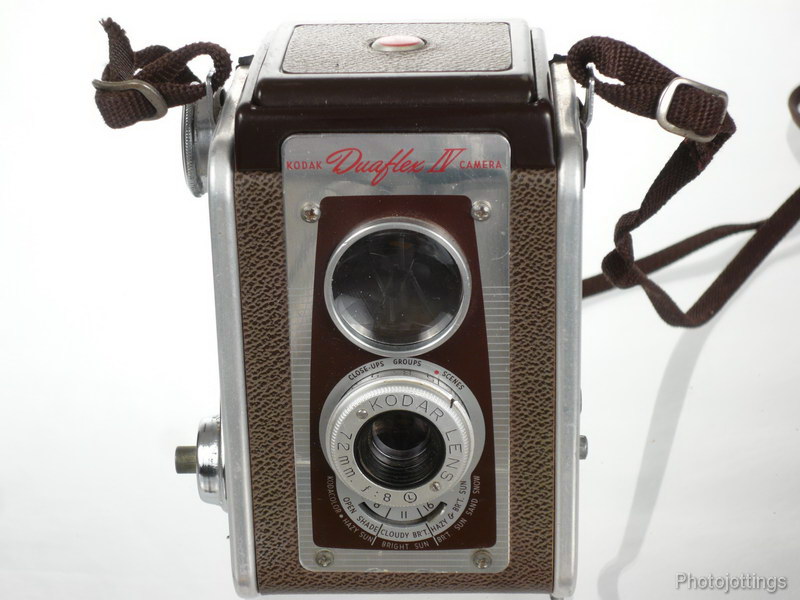
The front of the camera shows us the aperture settings below the lens. For Kodacolor (Kodak’s color film name at the time) use F/8 for hazy sun, or open shade for B&W. Use Kodacolor at F/11 for Bright sun, or cloudy/bright for B&W. Use F/16 for hazy and bright sun with Verichrome pan B&W film, or bright sun, sand and snow for Kodacolor. My advise; use F/16 for all your shots if large prints are in mind.
The large round glass viewing lens above the taking lens is simply used to frame your subject, and not for focusing, as a real twin lens reflex camera does. However, the view is very bright and makes it easy to see and frame your subject, even in the shade. Keep in mind the image is reversed, and it takes a bit of practice to master precise compositions.
The camera lens has a focusing from cell, and has zones like ‘close-ups,’ ‘groups and ‘scenes’ to make it easy to set the correct focus. For the more advanced user, there is also a focus scale that is just barely visible in the picture above; it goes from 4ft, (1.3m) to infinity.

The side view shows up the winding knob on the top left, and the shutter button opposite. The oblong decorative piece is supposed to mimic a cranking film winder like you would see on a real twin lens reflex camera.
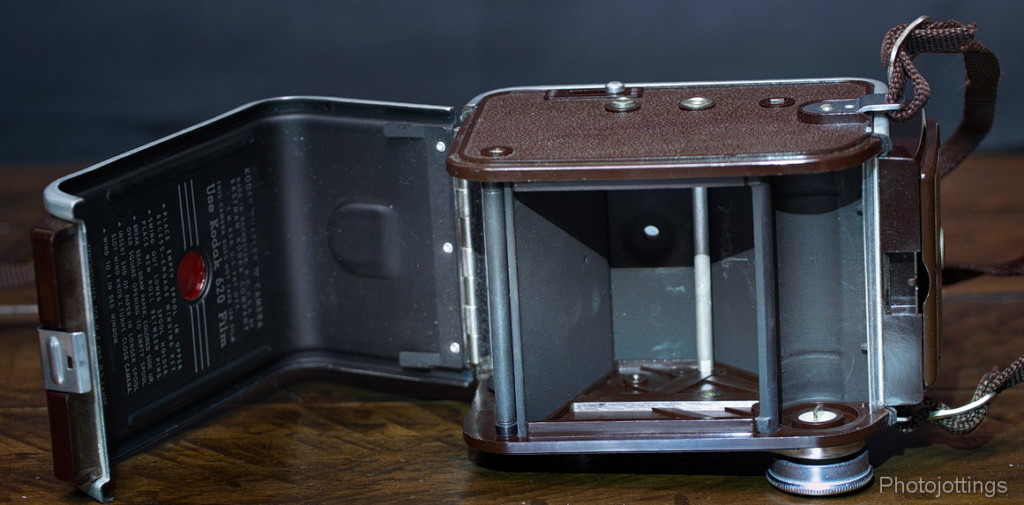
Inside there are actual moving film guide rollers, and a fixed type ‘pressure plate’ built into the back cover, not great but better than nothing. The side, (visible at top) shows the flash attachment area, and the ‘long’ and ‘instant’ button. The red window on the door to the left shows you where to stop when advancing the film.
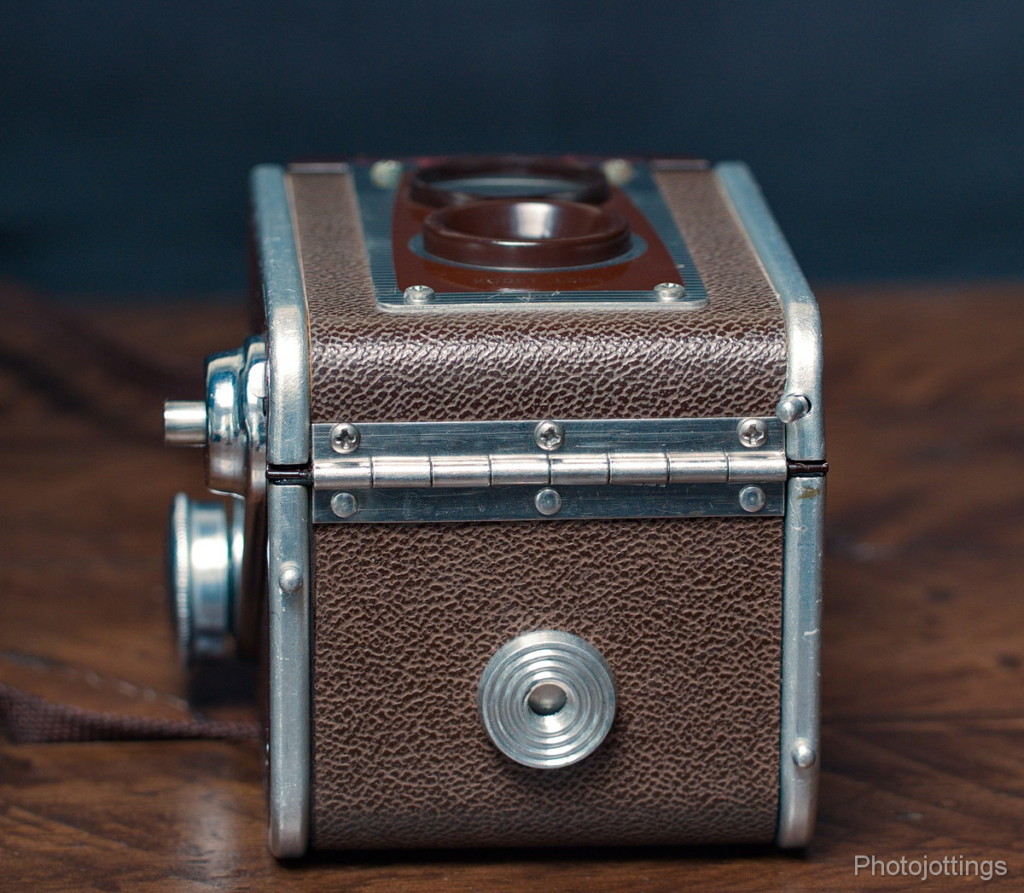
There is a tripod socket for those long exposures at night. The hinge is where the back swings away from the body to load film. It looks like one of the peg feet is bent, darn it.
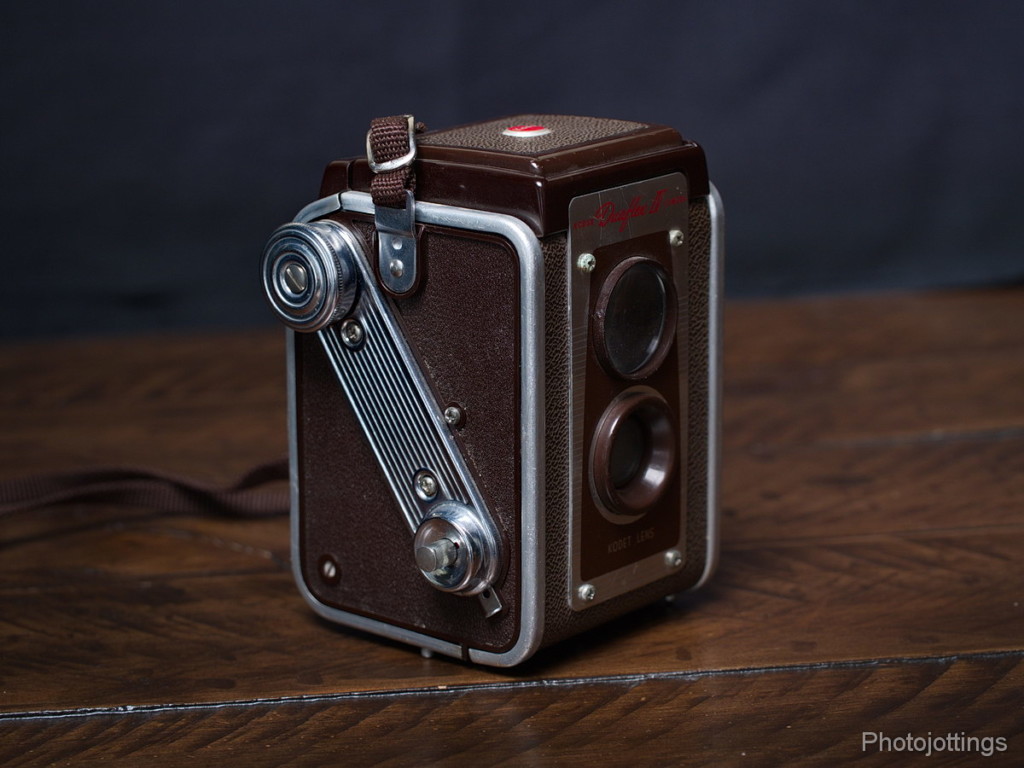
This is a Duaflex IV with a less expensive ‘Kodet’ lens, 75mm, F/15, but everything else is the same.

The shutter speed test shows an average speed of about 1/40th second. So with print type film, you can safely use ISO 100-400 rated film at F/16.
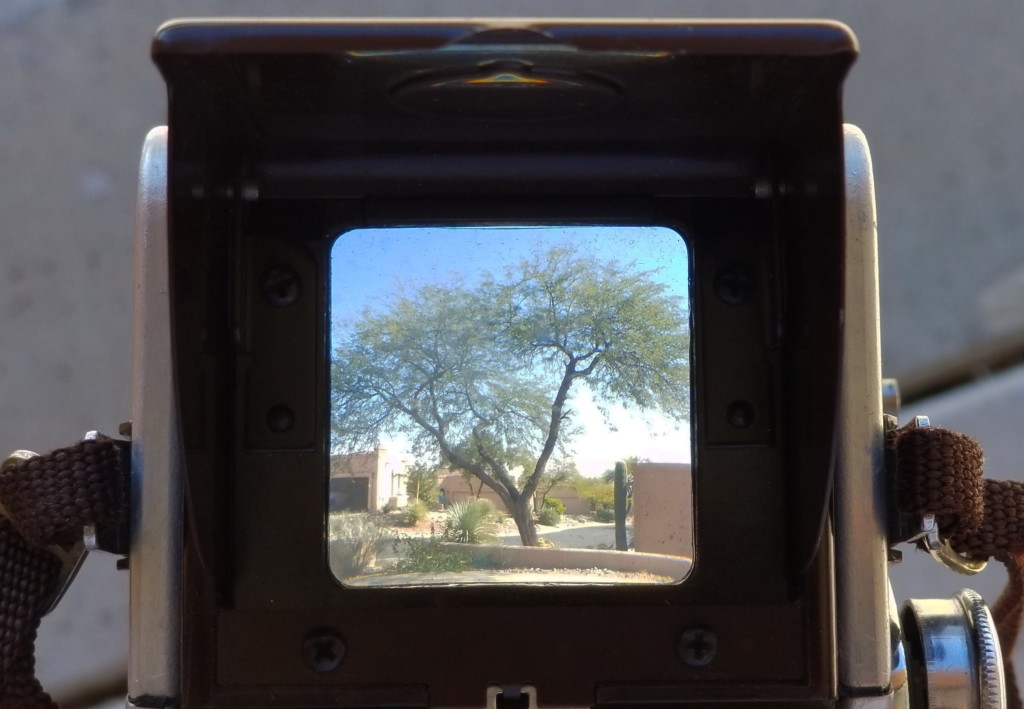
Here is the view through the bright viewfinder. The scene is reversed, and always in focus; it is not connected to the focusing mechanism as is a real twin lens reflex camera, so don’t forget to set your focus before looking through the viewfinder and pressing the shutter button!
Here are some test images scanned by my local lab; they did a decent job, but not great. All are around 2400 pixels wide; there is no additional resolution from scanning at a higher sample rate. Click for larger images.
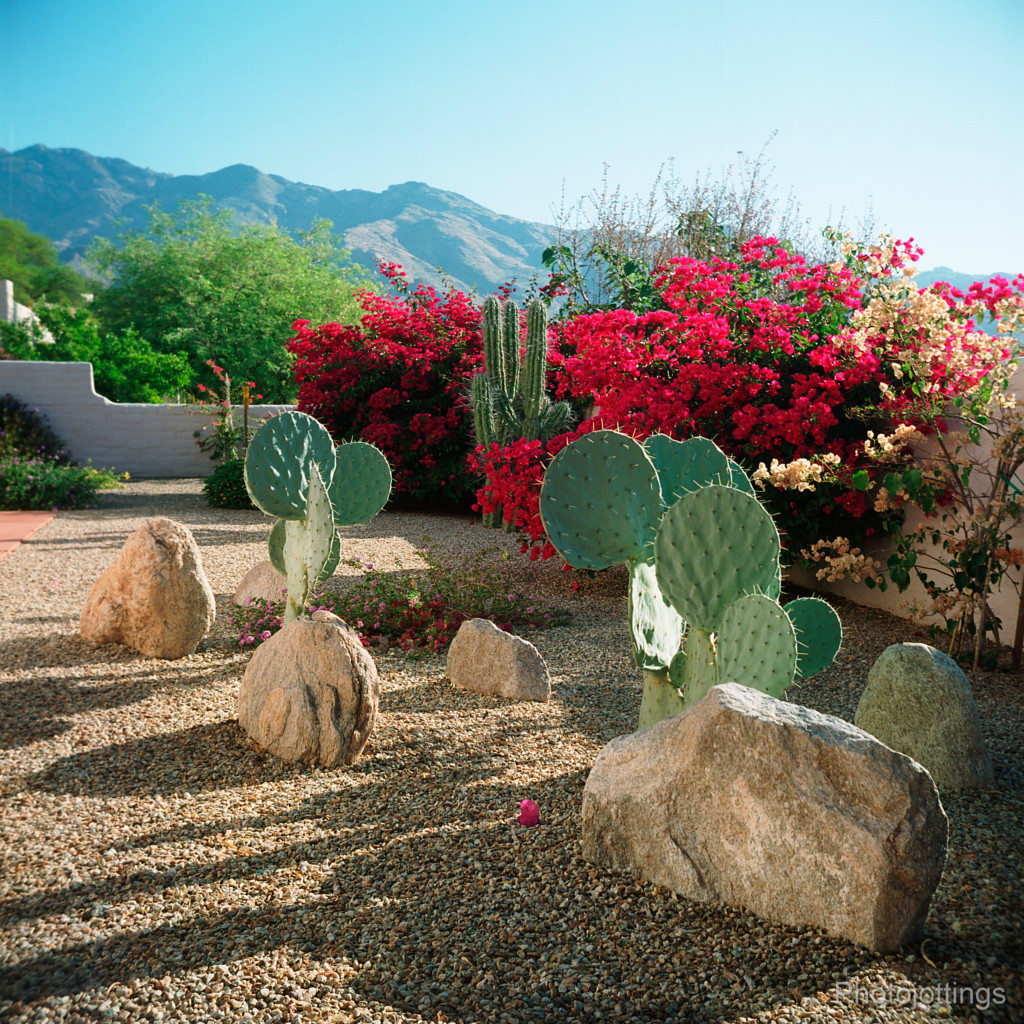
Early morning mountain scene with the focus on the cacti in the foreground. Fuji Pro 160C.
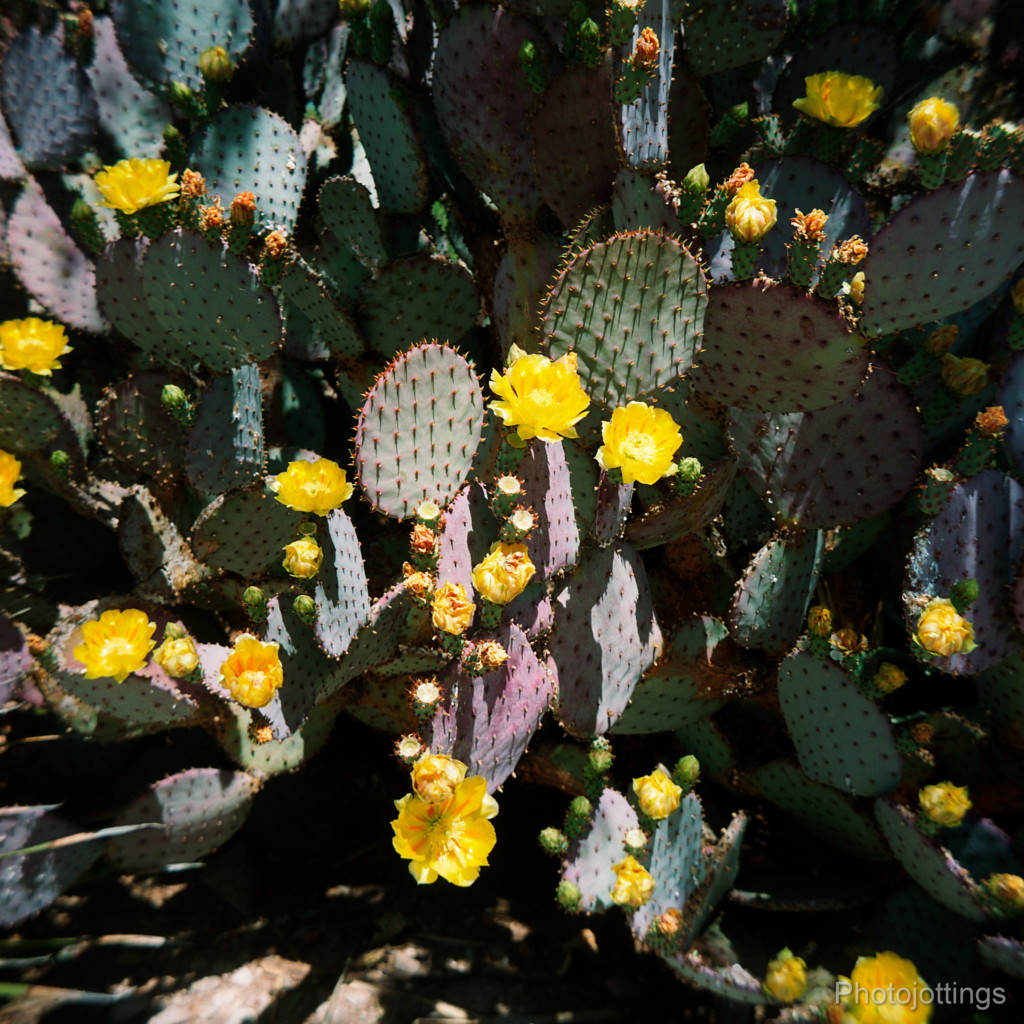
Close focus on the flowers, F/16 using Fuji Pro 160C.
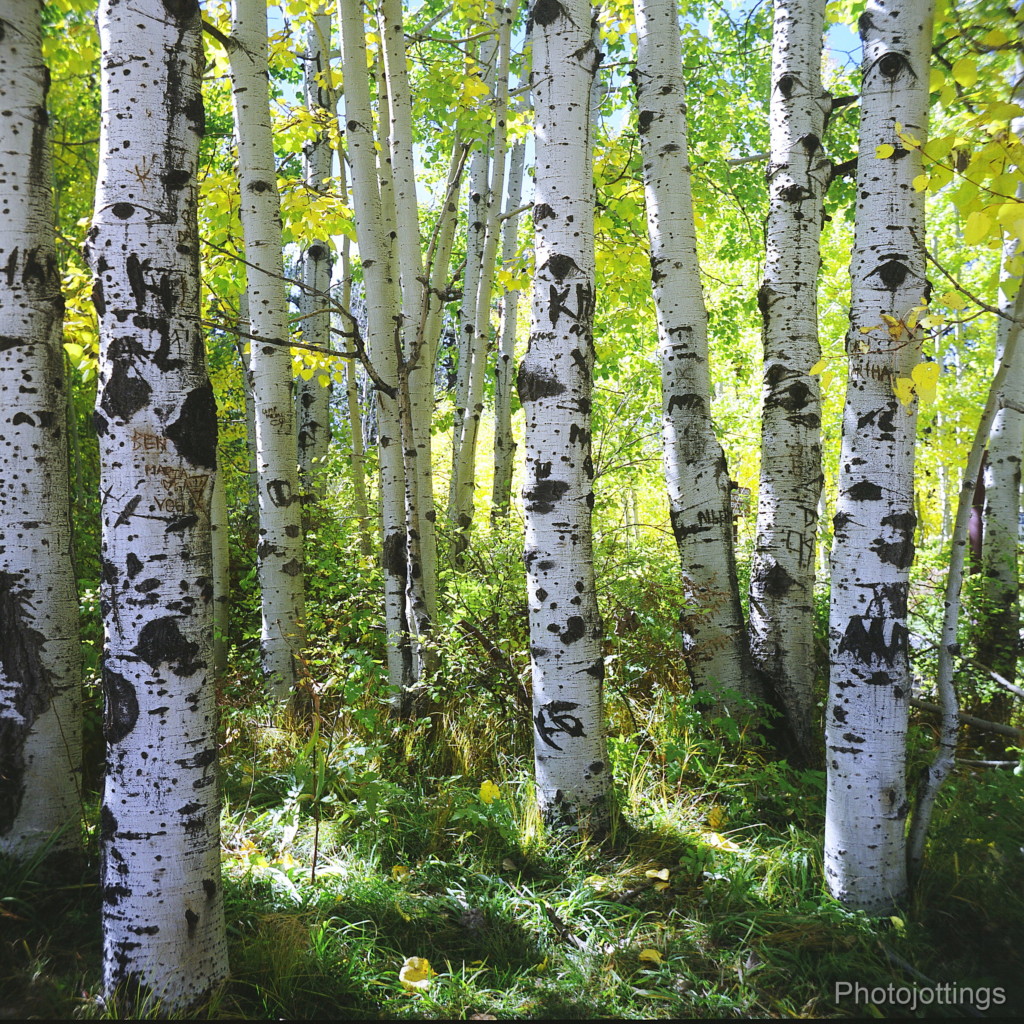
This shot I think was focused on the foreground trees. A huge range of shadows to highlights here. Fuji Pro 160C.

Another close focus shot at the minimum 4′ (1.3m). I see some nice background blur at F/16. The glove in the bush is the focus point.
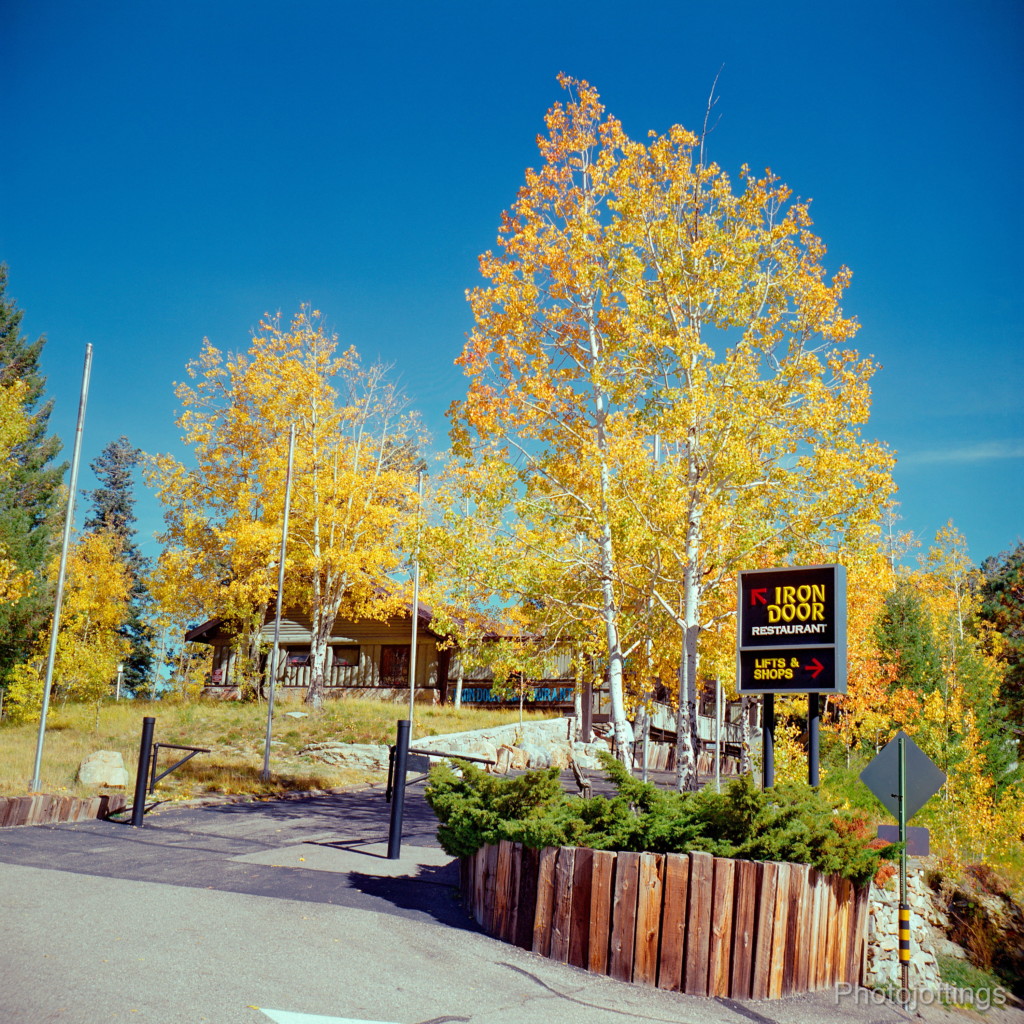
Bright mid-day light, and good exposure here, F/16 at infinity focus. Quite sharp, even at the far edges. This is the whole image, there was no cropping or straightening done. This one I scanned myself and resized to 3000 pixels square, which retains all the detail of the negative. Click for large size. Fuji Pro 160C.
Conclusion.
The relatively small and lightweight Kodak Duaflex IV is actually capable of producing some high quality results, much more so than this very popular camera. I like the fact that you can frame your subjects easily in the bright viewfinder, which is brighter than many of the expensive real TLR cameras of the day. The double exposure prevention system is definitely a plus; I don’t know about you but I always seem to forget to advance the film on my cameras without this feature and ruin some shots. The three aperture choices are nice to have, but keep F/8 for emergencies only as it is pretty soft. I’d keep the aperture at F/16 for just about everything in bright light, and use ISO 200-400 film. When it’s cloudy out, use some Kodak Portra 800, or Fuji Superia 800 at F/11-16 for well exposed shots.
The only downside for this camera is that it takes 620 film. However, with a little cutting and sanding, you can use commonly available 120 film, that’s what I did here; or you can roll your own 120 film on to a 620 spool. Even so, the Kodak Duaflex is still a pretty fun camera, and very easy to use too. For gregarious people, using this camera in public tends to elicit comments from bystanders, and maybe you’ll even make a new friend or two!
If you buy one of these cameras, make sure it has the Kodar F/8 lens. The cheap version has a ‘Kodet’ lens, and is not as high quality, nor does it focus like the Kodar lens.
Get fresh 620 film here B&H, eBay
Get 120 film and modify or re-spool it yourself, B&H, Amazon, eBay
Please consider buying your goodies through my links; doing so helps support the site, thanks!